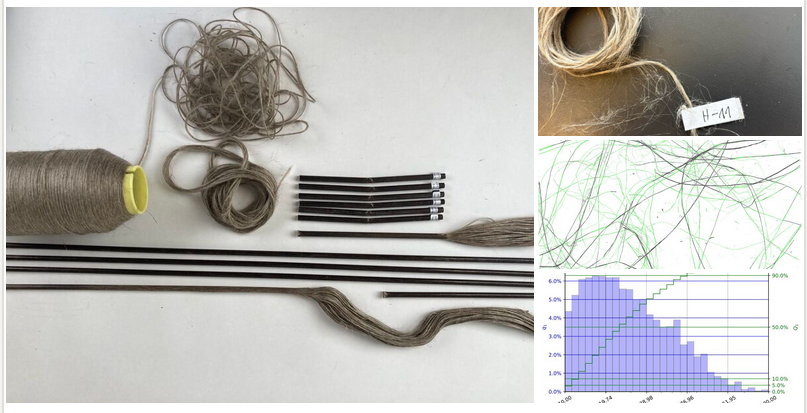
In their “RAW” project, Valentine Troi and her working group at the University of Innsbruck are investigating the properties of various natural fiber products such as yarns and tapes made from hemp and flax fibres for use in fiber composites.
The focus here is on reliably predicting the future properties of the materials. The geometric parameters of the fibers can provide a clue here.
Given this background, we examined a handful of different samples and are presenting one of the measurement results here today as an example:
The low-twist roving “H-11” was examined. The first image shows the roving as it was processed into the pultrudate, while the second image shows the roving sent to the IST – Innovative Scan Technologies GmbH laboratory.
The low-twist roving was carefully pulled apart until only the individual fibers remained. Images of the fibers were then taken in a high-resolution scanner and evaluated with our FibreShape software (Figure 3).
The results are summarized in the histogram (Figure 4). This shows that 95% of the fibers are smaller than 100 micrometers, with a median value of 27 micrometers.
The results from the fiber thickness measurement confirm the relatively low thickness variation for bast fibers and the high degree of combing of the hemp fibers.
